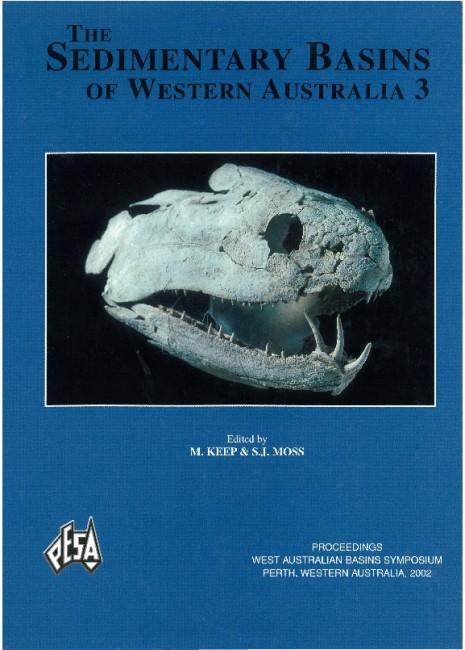Publication Name: The Sedimentary Basins of WA
Authors: R.J. Campbell, R.W. Howe, J.P. Rexilius & C.B. Foster
Publication Volume: 3
Date Published: December 2002
Number of Pages: 28
Reference Type: Book Section
Abstract:
Petroleum companies operating on the North West Shelf typically employ the composite calcareous microfossil (KCCM) zonation to correlate middle to Upper Cretaceous strata. This zonation combines both calcareous nannofossil and foraminiferal biostratigraphic events to provide high-resolution biostratigraphic subdivisions and correlation. The zonation was locally developed to overcome problems in the application of the standard (Tethyan) schemes, caused by biogeographic differentiation of Cretaceous nannofossil and foraminiferal assemblages. Examination of the Maastrichtian - uppermost Campanian interval has: i) identified new nannofossil and planktonic foraminiferal events, including the highest occurrences (HO's) of Petrarhabdus vietus and Stoverius sp. 1, and the lowest occurrences (LO's) of Pseudotextularia intermedia and Racemiguembelina powelli; ii) shown that the LO of Abathomphalus mayaroensis predates the LO's of Racemiguembelina fructicosa and Contusotruncana contusa thus redefining KPF Zones 1 and 2; and iii) indicated the presence of a LowerMaastrichtian disconformity/condensed section on Exmouth Plateau and to a lesser extent the Vulcan Subbasin.
Documentation and refinement of the hitherto unpublished KCCM zonation is important for consistent well correlation on the northwestern Australian margin, higher resolution biostratigraphy, and more accurate correlation to the international chronostratigraphic scale.


